
Newport News Authenticates Keel for US Navy Sub Arkansas
forces.”Arkansas is the 27th Virginia-class fast attack submarine being built under the teaming agreement with General Dynamics Electric Boat.“With advances in sound silencing, acoustic sensors, and weapons delivery systems, Arkansas will traverse the world’s oceans and seas as an apex predator. Representing our asymmetric advantage in the undersea domain, the Arkansas will have no equal,” said Vice Adm. William Houston, commander, Naval Submarine Forces.“It is an incredible honor for the crew to begin to establish the relationship with our namesake state of Arkansas
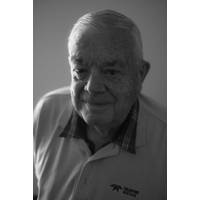
WHOI Appoints Douglas C. Webb as Oceanographer Emeritus
into the world’s vastly under-sampled oceans. His innovative work includes low-frequency acoustic sound sources used for water mass tracking, long range navigation, and tomography (SOFAR, RAFOS, Tonpilz), Vertical Current Meters (VCMs) to measure water chimney convection, profiling floats (ALACE and APEX) that evolved into the ARGO program, and the genesis of ocean gliders (Slocum). The sound sources are still in use today for a variety of applications. The VCMs morphed into the floats with the added capability of electromagnetic probes (EM-APEX) for water velocity measurements that are now air deployed
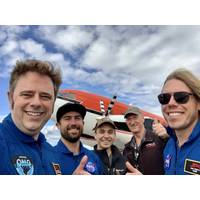
NASA’s JPL Using Teledyne Marine APEX Profiling Floats
Teledyne Marine announced the recent sale and deployment of three APEX profiling floats to NASA’s Jet Propulsion Laboratory in Southern California. The three floats were equipped with RBR CTD sensors, Short-Burst-Data for communication over the Iridium Satellite Network, and special parachutes for air deployment. The rise in global sea levels will be a major environmental challenge for the 21st Century. For this reason, it is of increasing importance that we improve our methods and understanding for predicting this process. A recent major initiative to do this has been led by JPL Scientist

Measuring the Hostile Ocean Beneath Hurricanes
Institution of Oceanography. The international Argo program has deployed fleets of these devices for sustained and widespread exploration of the global ocean. The resulting data sets form a rich resource for studying climate and ocean processes.Many of these devices are the Autonomous Profiling Explorer (APEX) floats supplied by Teledyne Webb Research, which has delivered over 10,000 profiling floats to the Argo program—the largest quantity from one supplier. APEX floats make periodic vertical cycles, typically every 10 days, by changing their volume (and therefore buoyancy) to rise and sink. As
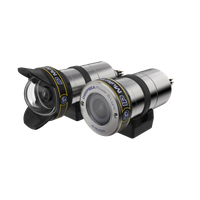
DeepSea Expands SeaCam Product Line
DeepSea Power & Light is expanding its SeaCam family of subsea imaging solutions with the new IP Multi SeaCam and IP Apex SeaCam. These subsea cameras offer efficient and high-quality compression along with support for common real-time IP streaming and camera management protocols, the manufacturer said.The IP Multi SeaCam provides a compact, fixed focus solution for subsea monitoring and tooling applications. Efficient and high-quality compression provides sub-200 ms latency network streaming with full HD resolution in both the 72° HFOV flat port and 105° HFOV dome port options. The 256 GB
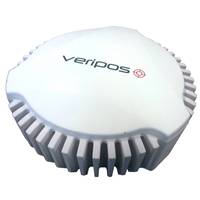
New GPS Interference Mitigation Solution
PI technology, to bring proven solutions that minimize vessel downtime and keep crews, operations and equipment working at a time when GPS denial events are increasing in frequency,” said David Russell, Marine Segment Manager at VERIPOS. “GAJT also combines with reliable correction services, Apex or Ultra, to provide an accurate and reliable positioning solution.&rdquo
Furze Promoted at Teledyne Marine Vehicles
Teledyne Marine – Vehicles promoted Pete Furze to Director, Navy Program Development – Vehicles. Furze has most recently been Teledyne Marine’s Product Line Manager for APEX profiling floats where his leadership has grown Teledyne’s market presence and customer satisfaction.Furze is a retired U.S. Navy captain with 30years in the Navy meteorology and oceanography community. He served afloat and ashore, including command of the Joint Typhoon Warning Center and Commander, Undersea Surveillance. Since transition in 2009, Furze has worked with small and large businesses, including
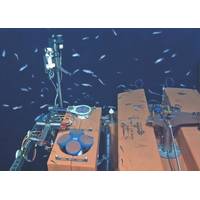
ADCPs: Action in OOI's Cabled Observatory
. Shallow Profiler Moorings Besides the underlying power / comms infrastructure, a distinguishing innovation of the Cabled Array is the Shallow Profiler Mooring. Designed and installed by APL / UW, SPMs provide a large, stationary, instrumented platform at 200 m depth. The platform sits at the apex of a unique two-legged mooring. From here, a science pod is winched cyclically through the upper ocean. The unusual design of the mooring offers the motional stability required for long-term success of the winched method. Robotic vehicles are used to install / recover both the platform

Ancient Sharks Likely More Diverse Than Previously Thought
Sharks have a reputation as ravenous hunters and apex predators, but new analysis of fossil records shows that some of the earliest sharks might have been filter feeders, taking in water through their mouths and catching food particles – think less great white and more anchovy, another filter feeder. This research, supported by the National Science Foundation (NSF), pushes the date for the last common ancestor between sharks and other types of jawed vertebrates back to 440 million years ago – more than 17 million years older than the previous estimate – and raises new



 February 2024
February 2024





